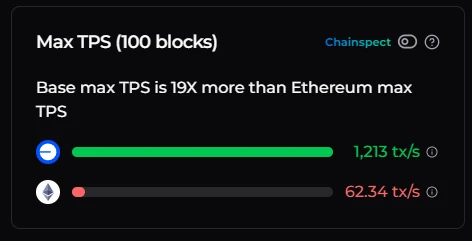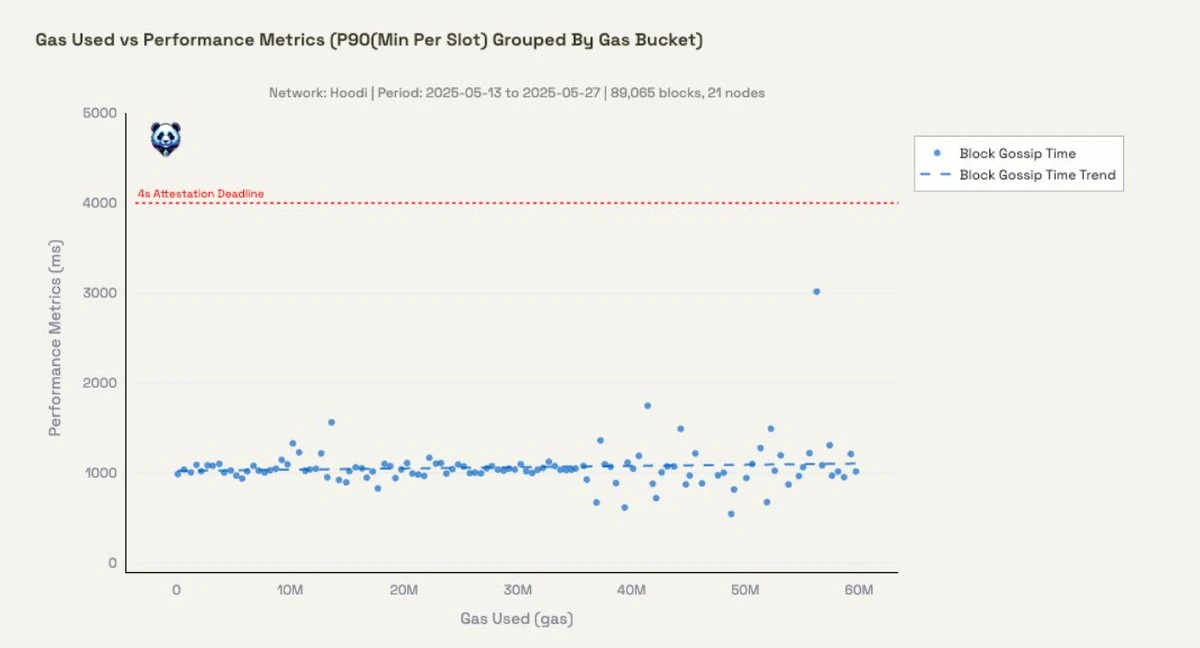In the past, many people still had the impression that the TPS (transactions per second) of ETH was "15 transactions per second." However, with continuous protocol optimizations, Ethereum's current TPS peak has increased to about 60, a fourfold increase.

Although this change is related to years of continuous optimization, the most direct reason can be attributed to simply and effectively raising the GAS Limit from the previous cap of 15 million to a new cap of 36 million.
Recently, ETH is set to raise the GAS Limit again to a cap of 60 million.
What is GAS Limit?
Every time we use ETH, we need to pay Gas as a transaction fee. The Gas Limit, as the name suggests, is the maximum amount of Gas that can be accommodated in each block. The higher this limit, the more transactions the block can process, and the network speed will increase accordingly.
Among various expansion paths, increasing the Gas Limit can be said to be the most immediate method.
More importantly, this adjustment does not require a hard fork because the Gas Limit is a dynamic parameter in Ethereum, and PoS nodes can make fine-tuning under the existing protocol rules.
In other words, the protocol itself allows each new block producer to adjust the Gas Limit within a range of ±1/1024 compared to the parent block, which is part of the consensus mechanism. This is in stark contrast to Bitcoin's mechanism of fixing the block size at 1MB.
Therefore, increasing the Gas Limit does not require system upgrades or code modifications; as long as PoS nodes continuously "signal" support during block production, the network can gradually adopt this change. Currently, there are over 1 million validators in the Ethereum network, and as long as a certain support ratio is reached, the network will automatically transition to the new Gas limit and ensure compatibility for all nodes.
As of now, about 15% of validators have chosen to support the 60 million Gas setting. Ebunker has also participated in support; as a non-custodial node service provider, we always pay attention to the balance between Ethereum network performance and decentralization. Since this is a voluntary process, a considerable number of nodes still maintain the old configuration (e.g., 30 million).

Increasing the Gas Limit does not mean that PoS nodes can earn more money; in fact, it is likely that they will earn less.
Since the launch of EIP-1559, Ethereum's Base Fee is directly burned, and validators can only earn the small tips that users voluntarily add. Once the Gas Limit is increased, it means that the overall processing capacity of the network is enhanced, transaction congestion is reduced, and the pressure to compete for tips also diminishes, leading to a natural decrease in tip amounts. Therefore, to some extent, increasing the Gas Limit may actually reduce validators' income while further increasing the amount of ETH burned.
Thus, under such an incentive mechanism, validators who still choose to support the 60 million Gas Limit can be said to be selfless.
In addition, the community recently proposed a rather controversial proposal, EIP-9698. This proposal suggests raising the Gas Limit from 36 million to 3.6 billion over the next four years, aiming to increase Ethereum's TPS to about 2000, directly targeting the current high-performance chain Solana. However, this idea is clearly somewhat radical.
Theoretically, as long as the hardware performance of the nodes is strong enough, the Gas Limit can indeed be continuously raised. But in reality, the Ethereum network has over 1 million active validators, requiring consideration of a wide range of participants. In contrast, the number of validators in some other high-performance public chains is only in the hundreds, with a gap of up to ten thousand times between the two.

Even the current proposal to raise the Gas Limit from 36 million to 60 million was only able to enter the network adjustment rhythm after the Pectra upgrade brought execution load optimization.
According to research by ethpandaops, after the Gas Limit is raised to 60 million, about 90% of blocks can be discovered within 1016 milliseconds. Compared to before, block propagation delay has slightly increased, but it is still within an acceptable range.

However, 66% of nodes in the Ethereum network need to fully receive the block and its accompanying blob data within 4 seconds to ensure that the block is considered valid. Based on this propagation limitation, the theoretical upper limit of Gas Limit calculated by the test network is about 150 million. Therefore, under the current architecture, the vision of EIP-9698 is difficult to realize in the short term.
Of course, if Ethereum implements a "large node / small node" architecture in the future, for example, allowing nodes that stake 2048 ETH to handle higher loads while 32 ETH nodes handle smaller blocks, it may open up new space for further expansion.
So, while people often joke that ETH Gas Price is continuously hitting new lows and that the "noble chain" no longer exists, this may not only be due to market changes but also because Ethereum itself is indeed becoming faster, more efficient, and more user-friendly.
Ebunker official website: https://www.ebunker.io
For more discussions, please join: https://t.me/ebunkerio
Ebunker Twitter: https://twitter.com/ebunker_eth
免责声明:本文章仅代表作者个人观点,不代表本平台的立场和观点。本文章仅供信息分享,不构成对任何人的任何投资建议。用户与作者之间的任何争议,与本平台无关。如网页中刊载的文章或图片涉及侵权,请提供相关的权利证明和身份证明发送邮件到support@aicoin.com,本平台相关工作人员将会进行核查。




